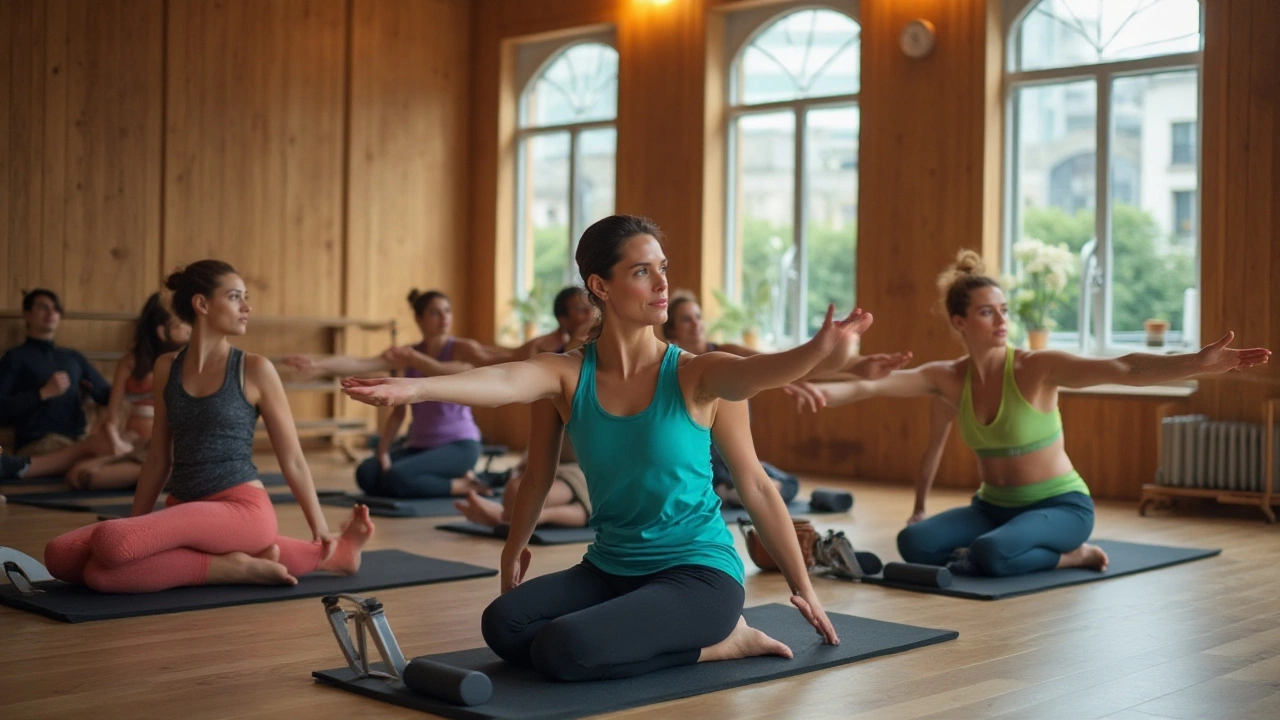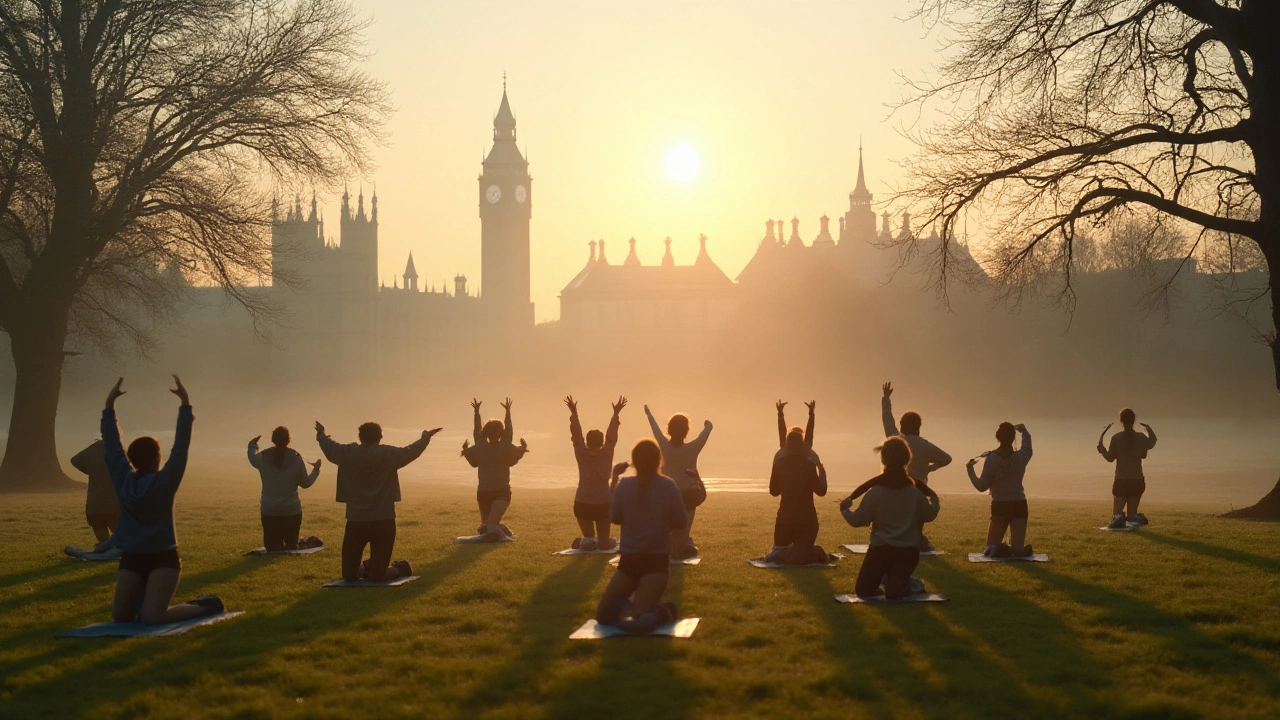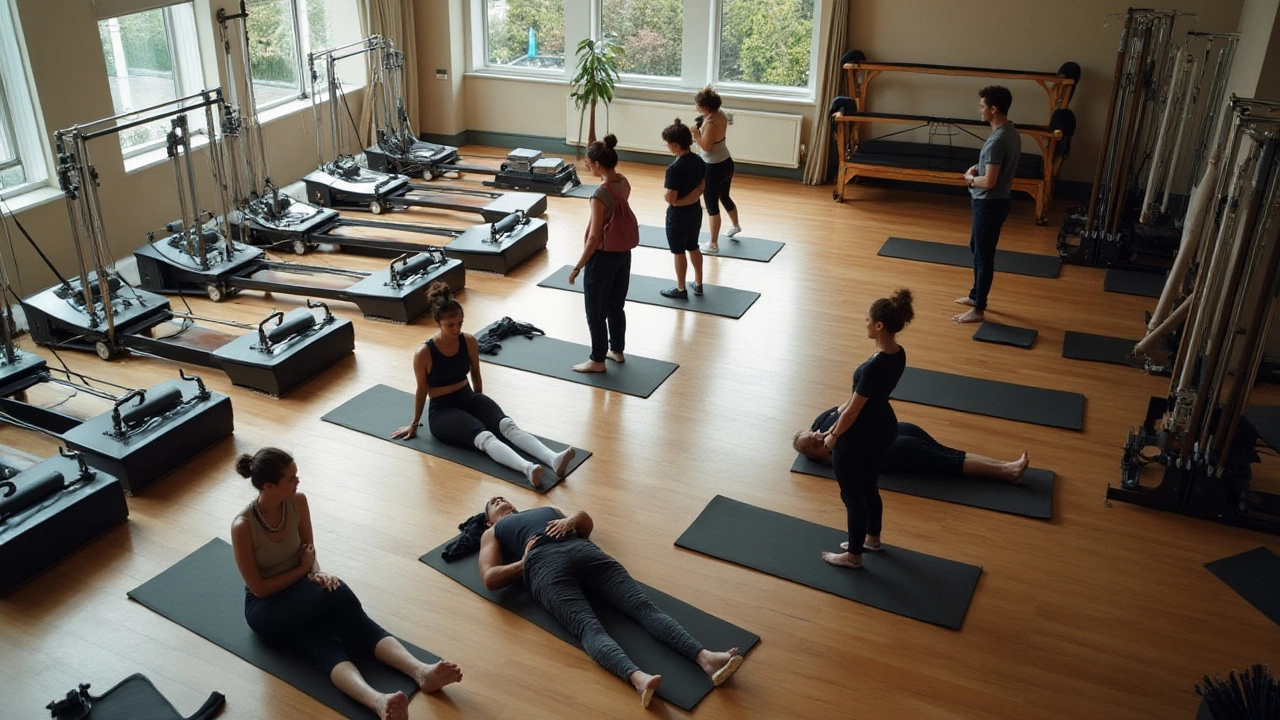
As we strive to achieve our fitness goals, many are curious about incorporating Pilates into their weight loss regimen. Known for its focus on core strength and flexibility, Pilates is more than just a stretching routine; it can be a powerful tool in your fitness arsenal.
While Pilates might not burn as many calories as a high-intensity interval training session, its benefits extend beyond mere weight loss. It's about building a strong body, improving posture, and enhancing your overall well-being.
Join us as we explore how Pilates can support your weight loss journey, not only by burning calories but by fostering a healthy relationship with exercise and your body. Whether you're a seasoned practitioner or a curious newcomer, there are ways to integrate this mindful practice effectively into your weekly workouts.
- Understanding Pilates
- Pilates and Calorie Burn
- Strength, Flexibility, and Weight Loss
- Integrating Pilates into Your Routine
Understanding Pilates
Pilates is much more than what many perceive as just floor routines or fancy stretches. Emerging from the innovative mind of Joseph Pilates in the early 20th century, this exercise method was originally engineered to help injured athletes and dancers safely return to exercise and maintain their fitness. It owes its unique nature to the combination of elements borrowed from gymnastics, yoga, and even ancient Greek and Roman fitness regimes. Unlike some high-intensity routines, Pilates emphasizes a balanced approach, focusing not on the muscles’ bulk but on their efficiency, core strength, and flexibility. It stands as a testament to how a fitness routine can harmonize the mind and body.
The key to understanding Pilates lies in its six principles, which are concentration, control, center, flow, precision, and breathing. These tenets guide every movement, ensuring not only that exercises are effective but also that they are executed with mindfulness. Pilates engages the core muscles through precise and careful movements. This helps create a strong foundation that impacts everything from daily postures to athletic performance. In a typical session, practitioners often experience a heightened sense of bodily awareness, which contributes to long-lasting benefits such as improved alignment and posture. Many experts, including renowned physiotherapist and Pilates instructor Karen Adamson, testify to its holistic benefits, saying,
"Pilates is a workout for the body and a tonic for the mind, fostering a connection that traditional exercise often neglects."
Pilates isn't confined to mat exercises alone. Apparatus like the Reformer, Cadillac, and Wunda Chair add diversity and challenge to the regimen. Each apparatus employs springs and pulleys that offer variable resistance and support, making the exercises tailored to individual needs. This adaptability makes Pilates a versatile option for people of all fitness levels. In fact, according to a study published in the Journal of Strength and Conditioning Research, individuals who practiced Pilates regularly for six months reported significant improvements in balance and lower back strength. Such findings help explain why Pilates has steadily gained a reputation for being not only effective but also refreshingly suited to the needs of both novices and fitness aficionados.
For those starting their Pilates journey, it is crucial to find an instructor who values form, provides correction, and respects individual limitations. Whether engaging in a group class or a personalized one-on-one session, the instructions should prioritize your specific fitness goals and any physical limitations you may have. Pilates not only reshapes your body but also reshapes your mindset by nurturing a more profound connection to how your body moves and responds. This mindful approach can make the pursuit of weight loss more sustainable and fulfilling, as it encourages you to become attuned to your body's needs and progress.

Pilates and Calorie Burn
When it comes to understanding how Pilates impacts calorie burn, it's essential to look at the exercise's core principles and its approach to fitness. Unlike high-intensity workouts, Pilates emphasizes controlled movements and core strength, which might not always lead to the high calorie expenditure typically associated with cardiovascular exercises. However, what it lacks in intensity, it compensates with efficiency in sculpting and strengthening the body in ways that are equally beneficial long-term.
A session of traditional mat Pilates, depending on the intensity and your weight, can burn anywhere from 200 to 300 calories per hour. This range places it on par with moderate-intensity workouts such as brisk walking or gentle swimming. This might not seem like a large number but consider how this steady burn adds up when integrated into a well-rounded fitness plan. Pilates isn’t just about burning calories; it’s also about creating a balanced body, enhancing muscle tone, and increasing flexibility, all of which contribute to overall weight management and health.
There's a growing body of research highlighting the auxiliary benefits of Pilates beyond mere calorie burning. According to a study published in the Official Journal of the American College of Sports Medicine, regular practice significantly improves abdominal strength and flexibility, two key factors in maintaining an active lifestyle. Additionally, this form of exercise boosts metabolism by building lean muscle mass, which naturally burns calories more efficiently throughout the day. An experienced instructor once said, and I quote, "Pilates transforms the way your body looks, feels, and performs." This subtle yet profound change contributes to a steady calorie burn leading to weight loss when combined with a healthy diet and other physical activities.
Some practitioners find Pilates’ mind-body connection incredibly motivating. This aspect enhances body awareness, potentially leading to healthier choices both in and out of the studio. Becoming more conscious of one’s movements often translates into better posture and a more active engagement with daily tasks, which inadvertently increases daily calorie expenditure. Embracing Pilates is about more than burning calories; it's about nurturing a body that's fit, flexible, and in tune with its own rhythms.
For those looking to maximize calorie burning potential through Pilates, exploring its contemporary forms like Pilates reformer classes can be beneficial. These classes incorporate resistance from a reformer machine, significantly increasing the intensity and, consequently, the number of calories burned. Participants often report a more dynamic workout experience, which challenges their muscles in new and beneficial ways. This adaptable nature is what makes Pilates a beloved practice for many, able to meet various fitness goals from weight loss to rehabilitation.

Strength, Flexibility, and Weight Loss
Understanding how Pilates contributes to weight loss begins with recognizing its holistic approach to fitness. Unlike traditional workouts that solely emphasize calorie burning, Pilates focuses on building an athletic and well-rounded physique by enhancing strength and flexibility. This combination can lead to long-term weight loss by increasing muscle mass, which in turn boosts resting metabolic rate. When muscles are stronger, they consume more calories at rest, making Pilates a hidden gem in the fitness world. It also helps in improving balance and coordination, which are crucial for overall wellness. By developing these core areas, practitioners often experience an enhanced ability to perform other physical activities, leading to a more active and engaging lifestyle overall.
One of the standout benefits of Pilates is its ability to cultivate an intimate awareness of the body. This awareness helps individuals listen to their bodies, which in turn can impact food choices and lifestyle decisions. When you are in tune with your physical self, it is easier to understand cravings and manage them effectively, fostering healthier habits. Pilates practitioners often report not just physical transformation but psychological ones too, as it contributes to stress reduction. A calm mind is less likely to resort to stress-eating, which supports weight loss efforts. Regular sessions have been shown to reduce cortisol levels, a hormone linked to stress and weight gain around the abdomen.
"Pilates is an education in body awareness. As you understand your body's needs, strengths, and weaknesses, you pave the way toward a balanced weight," states Lydia Bach, founder of the Art of Control Pilates Center.
Moreover, the focus on core strength in Pilates translates to improved efficiency in daily movements. A strong core supports better posture, and improved alignment naturally alleviates unnecessary strain on other body parts. This can prevent injuries and enable more vigorous participation in various physical activities, encouraging a cycle of ongoing movement. Through its low-impact format, Pilates is accessible to many, reducing the risk of injury compared to high-impact exercises, which is a crucial consideration for beginners or those returning to fitness after a hiatus.
Although Pilates might not always come to mind first in a weight loss journey, the combination of core strength, flexibility enhancement, and mental clarity can significantly support one's wellness goals. Embracing Pilates doesn’t just change how your body looks, but more importantly, it changes how you feel about your body, fostering confidence and a positive self-image. This empowered mindset can often be the most crucial element in sustaining healthy weight management.

Integrating Pilates into Your Routine
Incorporating Pilates into your fitness routine can be both rewarding and transformative, providing a balanced approach to physical activity that can enhance your weight loss journey. If you're new to this discipline, begin by setting aside time specifically for Pilates, ensuring that it becomes a regular part of your weekly schedule. Consistency is crucial; aim for at least two to three sessions a week to notice the benefits.
To ensure you're maximizing the potential of Pilates for weight loss, consider combining these sessions with aerobic exercises that elevate your heart rate. Activities like brisk walking, cycling, or swimming can complement Pilates, targeting different facets of fitness. This fusion of workout styles not only boosts calorie burn but also enhances cardiovascular health. Meanwhile, Pilates helps improve your core strength, posture, and muscle tone.
Finding the right setting is also essential. While employing a studio class with a certified instructor can provide valuable guidance and feedback, practicing at home with online classes or tutorials is a feasible alternative for self-starters. Set up a comfortable space with enough room to extend your limbs, and invest, perhaps, in a quality mat and a few simple props like resistance bands or low-weight dumbbells to diversify your practice.
Remember, listening to your body is key when practicing Pilates. Unlike high-impact exercises, Pilates requires mental engagement and body awareness, making it a unique blend of physical and mindful practice. Here’s a compelling insight from Joseph Pilates himself:
The mind, when housed within a healthful body, possesses a glorious sense of power.This underscores the value of being mindful of your movements, ensuring they are executed deliberately and safely.
For those looking to track progress and stay motivated, consider keeping a fitness journal to record your sessions, reflect on improvements, or adjust goals as needed. Connecting with a community, whether online or in person, can also be beneficial, offering support and accountability.
Lastly, tailor your Pilates sessions to meet specific goals. Focus on routines that target your weakness areas or explore more intensive reformer classes for a heightened challenge. By integrating Pilates into your routine strategically, you're not only set on a path of losing weight but also committing to a healthier lifestyle that embraces wellness of both the body and mind.
